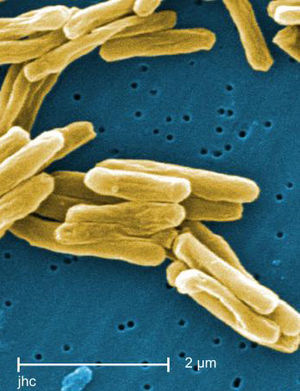Tuberculosis in Children in Developing Countries
Introduction
Tuberculosis is caused by the bacteria Mycobacterium tuberculosis and is a highly contagious disease. Today, most Tuberculosis cases are found in low -income regions like Southeast Asia and Africa. Southeast Asia has one of the highest incidence rates of Tuberculosis and contains nearly 34% of all cases worldwide [5]. It is also estimated that in every 100,00 people living in Sub-Saharan Africa 350 are living with Tuberculosis [5]. The presence of Tuberculosis in children is an important indicator of the overall status of health in a particular country. In most cases, Tuberculosis in children can be traced back to an adult host [4]. In many developed nations, Tuberculosis can be treated fairly easily with antibiotics. However, emerging strains of multi-drug resistant stands of Tuberculosis pose a major treat to the health of all populations, especially children. Public health strategies are crucial to controlling Tuberculosis because access in developing countries to effective antibiotics is limited. Children react different to Tuberculosis because their immune systems are still in a developmental state [4]. It is crucial that Tuberculosis is children is carefully controlled in developing countries so that a drug resistant strain does not cause another major worldwide epidemic.
To start your own paper: Type your page title into the Search box. (Be sure to spell correctly.) Press "Go." The site will offer you the opportunity to "Create this page."
Next, use the "edit" tab to reveal the coded file of BIOL 191 Paper 2009. Select all and copy; paste into the edit window of your own page. (Do not try to edit the class page.)
Introduce the topic of your paper. What public health question do you raise? Whose health is affected; in what country or location? What disease organisms are involved?
Below are some sample codes that will be useful for your paper.
To upload an image: Use "Upload File" (in margin at left)
To make the image appear, you need to embed image insertion code (see sample at right). The insertion code consists of:
Double brackets: [[
Filename: PHIL_1181_lores.jpg
Thumbnail status: |thumb|
Pixel size: |300px|
Placement on page: |right|
Legend/credit: Electron micrograph of the Ebola Zaire virus. This was the first photo ever taken of the virus, on 10/13/1976. By Dr. F.A. Murphy, now at U.C. Davis, then at the CDC.
Closed double brackets: ]]
Other examples:
Bold
Italic
Subscript: H2O
Superscript: Fe3+
Diagnosis
Include some current research in each section.
Treatment
Include some current research in each section.
Public Health Strategies
Include some current research in each section.
Conclusion
Overall paper length should be approximately 2,000 to 2,500 words.
Include at least two data figures.
Use professional sources, including at least two research studies.
References
"Tuberculosis" Baylor School of Medicine
"TUBERCULOSIS IN A CHILD – SEARCH FOR THE INFECTED ADULT NEARBY" Eurosurveillance
"Tuberculosis" World Health Organization
Edited by student of Joan Slonczewski for BIOL 191 Microbiology, 2009, Kenyon College.


